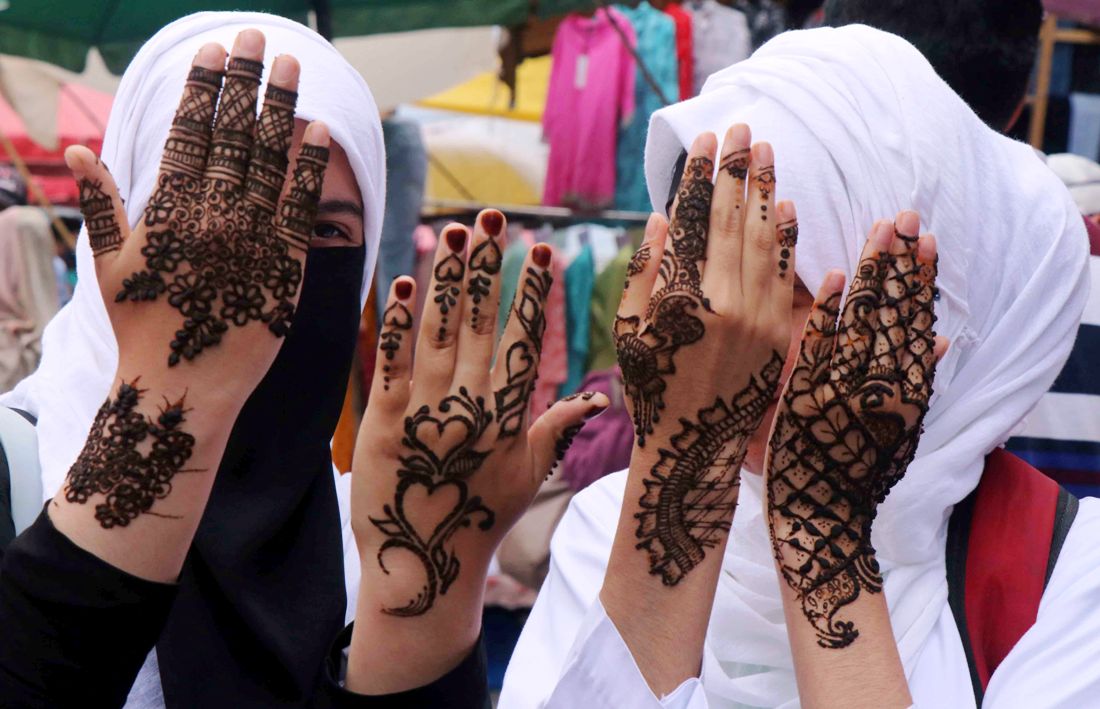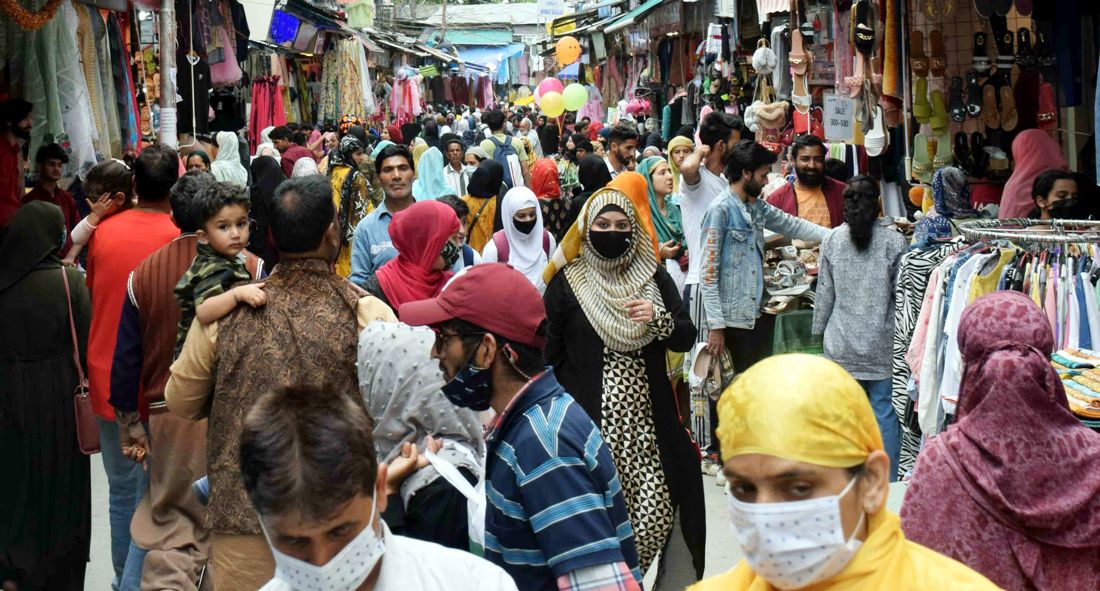Separated by around 70 days, the two Eid’s are ordained to be happy days in the Muslim lunar calendar. Happiness apart, the occasions are capital intensive and push more money into the market.
Eid is an occasion of joy. Though happiness is seen more as a state of mind, it still requires money to make the occasions look happy. That is perhaps why the twin Eids are huge money guzzlers as families are supposed to celebrate. However, the barometer for this aspect of the celebrations is the cash that banks dispense in the run-up to the festival. The cash withdrawals from Jammu and Kashmir Bank (JKB), which manages two-thirds of Jammu Kashmir’s savings and debt give an idea of financial transactions.
Day One
April 30 was the DyaarArfa, a name given peculiarly to the day that separates the Eid by a day, the day of Arfa. Endemic to Srinagar perhaps in the entire Muslim world, this day is specific to money – an Arfa of money. Traditionally, it is the day to dispense cash so that the faithful can arrange for the festival, scheduled a day later.
The day, this year, witnessed a sum of Rs 479. 32 crore changing hands despite JK Bank’s mPay app behaving like a ‘miser king’, sleeping for longer periods amid small transactions, a phenomenon attributed to the load by its managers.
Day Two
World Labour Day was the main business day as everybody thought May 1, is the Arfa, a day ahead of which is called Chand Raat in the rest of the Indian subcontinent. Markets were cool but the day recorded transactions of a whopping amount of Rs 817.61 crore alone from J&K Bank.
Day Three
In Kashmir, almost everybody had decided to celebrate Eid on May 2, Monday, but the great escape that the crescent moon did, pushed South Asia to Tuesday. This gave one more day to the people to get and spend cash.
Available data suggests that even this lean day led to the withdrawal of Rs 537.94 crore.
As data reveals, there was an estimated expenditure of around Rs 2500 crore for celebrations ahead of Eid – apparently in the last Ashra (10 days) of the Ramzan. Of this, almost Rs 1800 crore cash was withdrawn and possibly spent in the last three days through the channels offered by JKB alone, despite facing a lot of music for its fast-ageing app, mPay.
| Day One | ATM | mPay | POS | Total |
| 216.20 | 248.62 | 14.50 | 479.32 | |
| Day Two | 292.28 | 508.48 | 16.85 | 817.61 |
| Day Three | 201.37 | 323.28 | 13.29 | 537.94 |
Data Limitations
The transaction data of three days may offer an idea but will never give the whole picture. JKB despite being the big brother in Jammu and Kashmir’s banking sector is not the sole player. Secondly, there are more instruments for withdrawing money from banks other than plastic (debit and credit cards), POS machines and the mPay.
“We have a transaction basket, which includes both online and offline tools,” one JKB executive said. “The traditional withdrawals through bank cheques continue to be a major tool and a preferred one by the businesses. However, the online system is evolving major option as well.” Another bank official said that if it was calculated in an all-inclusive manner, the transactions could be in thousands of crores.
The same is true with other banks. “Ours being a centralised bank, we get our data at the end of a month so we may not be able to tell you everything,” one HDFC executive said. “However, it is a fact that our 200 ATMs operated non-stop and in the days ahead of Eid, we do see transactions surging by almost 70 per cent to the normal daily work.” After JKB, HDFC runs the major ATM network in Jammu and Kashmir and a conservative estimate suggests almost Rs 200 crore were withdrawn in the last three days from HDFC alone.
Not Moving Out
What is interesting is that every transaction does not mean moving out of money from the banking system. It moves from one account to another account and in most cases remains within the system. Transactions through POS, mPay, e-banking, and UPI (Unified Payment Interface) – all transfer funds from one account to another, without dispensing cash.
That essentially means that out of Rs 1800 crore transacted in three days ahead of Eid, more than Rs 1125 crore remained within the banking system. Only the ownership changed. This leaves slightly more than Rs 700 crore that people took out as cash using ATMs. There must be an equal or possibly a bigger amount that people withdrew from the branches.
Within a week to 10 days, a senior JKB functionary said, this cash also returns to the bank – at least two-thirds of it. “The rest of it remains in the piggy banks, wallets of the people and gultaans of sundry traders,” he said.
The Online
Unlike Kashmir’s real market, the virtual market was hugely busy for at least four days before the Eid. “All companies put together, we deliver around 15,000 parcels on daily basis,” one major courier company manager said. “But for the last four days of Ramzan, it doubled and was almost 30,000 parcels.”
The costs of these parcels vary. Safely, he said, you can take an average of Rs 800, an order. “It means Kashmir was making an online purchase of Rs 2.4 crore, a day and it continued for four days,” the manager said, on the condition of anonymity.

Expenditures
In the last few days, the only figure that appeared in media reports was about mutton consumption. Traders told reporters that around 650 truckloads carrying nearly one lakh goat and sheep heads were consumed by Kashmir. It amounts to around Rs 100 crore – almost all paid in cash.
Bakery and confectionery products that witness a good demand must have witnessed a turnover of Rs 20 crore, besides apparel of having around 100 crore. Eidhi, an amount that elders gift to youngsters, females, dependants – and in certain cases to the workers – must be much more than the apparel, bakery and mutton put together.
The Charity
Though giving out to the deserving and underprivileged is a yearlong affair, the month of Ramzan is the most preferred for charity. Zakat, for instance, is a divine obligation envisaging paying 2.5 per cent of their total savings and wealth above a minimum amount, nisab, each year, can be done any time in a year but the people prefer doing it in Ramzan.
However, Ramzan has its specific charity as well. It is called Sadka Fitr and is also known as Fitrana. It essentially has to be paid before the Eid prayers are offered.
However, the faithful have the option of deciding their own way of charity. They can offer 2.5 kgs of grains, the staple food they take; 2.5 kgs of dates or 2.5 kgs of raisins or an equivalent amount. Every year, Muslim scholars convert these measures into cash and offer the scale of basic minimum Sadqa that every Muslim has to offer. For 2022, in Jammu and Kashmir, the least Sadqa Fitr was capped at Rs 65 per head. The upper limit can extend up to Rs 3000 or even more, depending on basis of which variety of fruit one chooses to contribute in.
This charity is fascinating because it is distinct in the Muslim charity basket. This is a mass charity in which the haves’ have to give it to have-nots’ within a set deadline and at not less than the slab decided by scholars. It is a quick one-time fund transfer between two economic groups.

In the case of Jammu and Kashmir where more than 68 per cent of an estimated 13.6 million people (2021 estimate) are Muslims, it sets aside almost 93 lakh people within whom this fund transfer takes place. Jammu and Kashmir has the lowest below poverty level (BPL) population (10.38 per cent) in India and even if it is being taken as 13 lakh poor (within the 93 lakh population), it still means Rs 52 crore fund transfer taking place (from 80 lakh people to 13 lakh people) within a matter of few hours at the lowest rate of Rs 65 per head. This charity is mandated to go to the poor only unlike Zakat and other Muslim charities. An abrupt Rs 52 crore plus capital infusion in the weaker section of the society must be having a gradual impact.
Social Groups, Charities
Ramzan is the only month in which most charitable organisations, seminaries and mosque managements secure most part of their yearly fund requirements.
“We have permanent donors who donate on monthly basis,” Javed Javad of Yateem Foundation said. “But we also manage fifty per cent of our requirements in this month only.” Foundation takes care of the orphans and helps destitute families live with dignity by transferring funds on monthly basis to their bank accounts.

Certain smaller groups manage most of their requirements in Ramzan. “Our 90 per cent budget gets collected in this month only,” a member of a smaller city charity, Akar Bakar said.
“We manage almost 75 per cent of our requirements in this month only,” Aafaq Sayeed of the SRO said. His group is into diverse activities like Athrout, Help Poor and other organisations with a focus on health care. “I think the groups funded through charities must have a yearly requirement of Rs 50 to Rs 70 crore and most of it goes to their accounts in this month only.”















